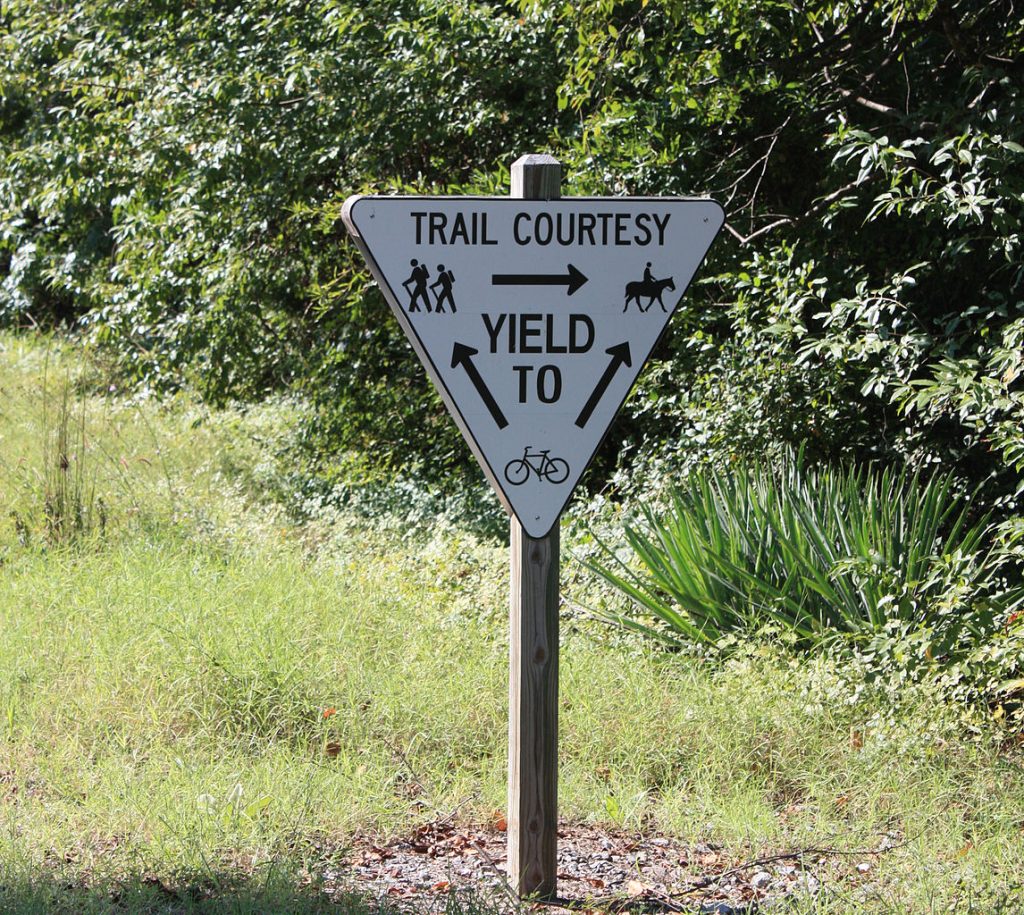There’s nothing like a quiet trail. Just you and your thoughts traveling down a sun-dappled path as the wind ripples the leaves in a soft applause.
For many people who enjoy the outdoors, that solitude is a treasure. At some point though, you’ll end up sharing the trail with fellow enthusiasts also taking a deliciously satisfying hiatus.
Whomever you end up meeting – hikers, cyclists, or even horses– there are general guidelines so everyone has the peaceful experience they are looking for.
Trails, especially those in more natural areas, tend to be narrow. Trail etiquette takes into consideration momentum, maneuverability, and inertia. How fast are you going? Can you turn? Are you able to stop?
When hiker meets biker
Mountain bikes and electric bikes are designed to move quickly in rough terrain. Hiker’s legs do not have the same reaction time. When hikers meet bikers on a trail, the bikers are expected to yield. Often, bikes are moving much faster than a person. It can be easier for a hiker to step off the trail. Despite that apparent ease, bikers should not expect a hiker to move. That being said, hikers should note that cyclists may be especially grateful for the extra space if they are pedaling hard to surge uphill.
While hikers have the right of way, they should be aware of their surroundings on trails shared with bikers. To further make everyone’s experience positive, bikers can call out as they are coming down slopes and mention if there are other bikers to follow.
When hikers meet horses
Compared to those on foot or bike, horses are larger, slower to change course, and least-predictable. Both hikers and bikers yield the right of way to horses, giving them as much space as possible and keeping sudden movements and loud sounds to a minimum.
If a horse is passing on a slope, hikers and bikers should get off the trail on the downhill side. Horses are more likely to run uphill than downhill if startled. It’s always a good idea to stay out of the way of a spooked horse!
When hikers meet hikers
On flat trails it may not matter as much, but as a rule, hikers going uphill have the right of way. Going uphill, a hiker’s field of vision is smaller and it can be more difficult to break pace as they’re huffing and puffing up an incline. Though often an uphill hiker will step aside to take a breather, it is their call to do so.
There are other etiquette techniques that apply to bikers, hikers, and equestrians. Being “in the zone” is part of what some people love about outdoor recreation, but taking time to announce your presence lowers the chance of surprising someone who is also “in the zone.”
If you are hiking as part of a group, walking single-file on trails means less scurrying out of the way should someone need to pass.
Other than making yourself known, letting nature’s sounds prevail is definitely a best practice. Loud phone calls, music, sirens, and shouting are not things an outdoor enthusiast came to the trail to hear. Loud sounds can also startle wildlife into the path of a horse or fast moving bike.
Finally, keeping dogs on a leash is more than just a courtesy, it is the expectation that every other person on the trail shares. Not everyone has positive experiences with dogs. Even the most friendly dog bounding up to someone is startling and stressful, especially to small children. Mountain bikers and trail runners going downhill may not be able to slow in time to keep from a collision. There are natural areas which allow off-leash recreation. It is the responsibility of the owner to review the guidelines for each place. If in doubt, use a leash.
When you’re on the trail caught up in musings, it can be hard to remember who has the right of way. In short: bikers yield to hikers, everyone yields to horses, and going uphill is harder than downhill. Whether on boots, wheels, or hooves, the ultimate right of way is being courteous to everyone on the trail.
Kelley V. Phillips is the Communications & Outreach Manager for Red-tail Land Conservancy. She strives to cultivate wonder in nature and action to protect it.




